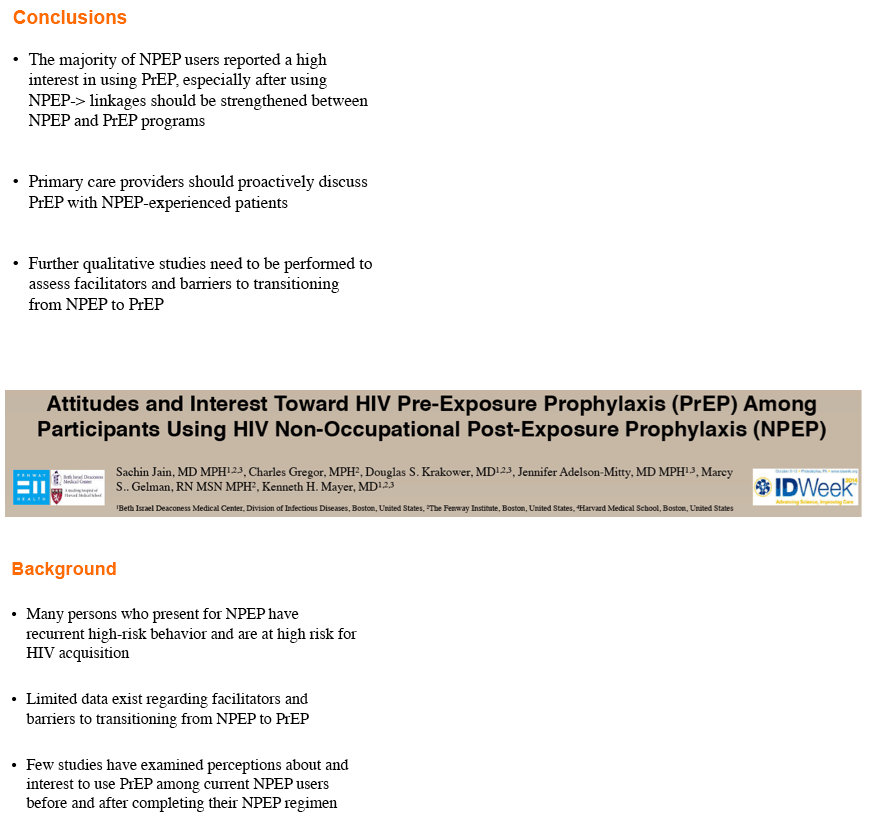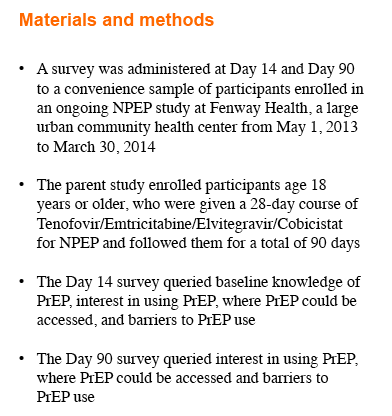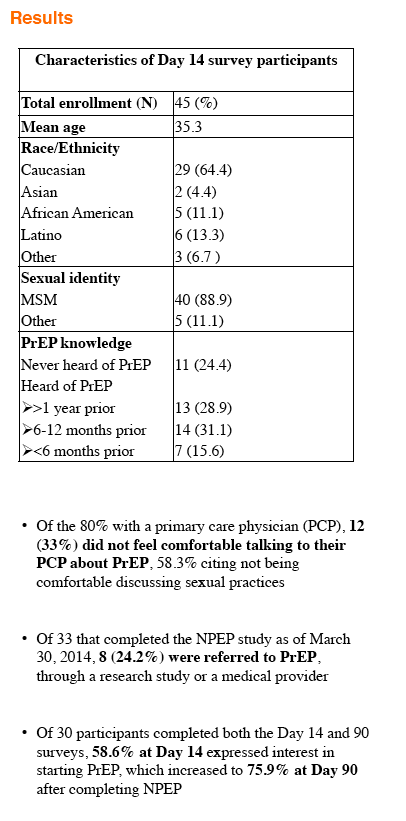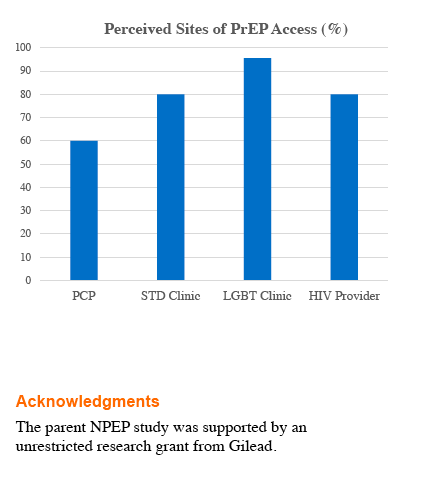 |
 |
 |
| |
Attitudes and Interest Toward HIV Pre-Exposure Prophylaxis (PrEP) Among Participants Using HIV Non-Occupational Post-Exposure Prophylaxis (NPEP)
|
| |
| |
"The majority of NPEP users reported a high interest in using PrEP, which tended to increase after completing their NPEP course. They perceived discomfort with discussing their sexual behavior with their PCP as a barrier to accessing PrEP compared to other clinical venues. Linkages should be strengthened between NPEP and PrEP programs."
Reported by Jules Levin
IDSA 2014 Oct 8-12 Philadelphia, PA
Sachin Jain, MD MPH1,2,3, Charles Gregor, MPH2, Douglas S. Krakower, MD1,2,3, Jennifer Adelson-Mitty, MD MPH1,3, Marcy S.. Gelman, RN MSN MPH2, Kenneth H. Mayer, MD1,2,3
1Beth Israel Deaconess Medical Center, Division of Infectious Diseases, Boston, United States,2The Fenway Institute, Boston, United States,4Harvard Medical School, Boston, United States


Program abstract:
Background: Many persons who present for non-occupational post-exposure prophylaxis (NPEP) remain at increased risk for HIV acquisition because of recurrent practices. Limited data exist regarding facilitators and barriers to transitioning from non-occupational post-exposure prophylaxis (NPEP) to pre-exposure prophylaxis (PrEP) for ongoing HIV prevention in this population.
Methods: Participants enrolled in an observational study of co-formulated Tenofovir/Emtricitabine/Elvitegravir/Cobicistat for consensual NPEP were administered a survey to assess perceptions about and interest to use PrEP at day 14 (D14) and day 90 (D90) of an NPEP study at a large urban community health center between May, 2013 and March, 2014. Proportions were calculated for categorical variables. A Chi-square test or Fisher's exact test was used to measure differences in responses.
Results: Of the 33 participants that completed the D14 and D90 visits for the NPEP study, 87% participants completed the D14 and D90 surveys, all of whom were men. Their mean age was 34.6, and most were Caucasian (79.3%) and men who have sex with men (86.2%).
Most (65.5%) had heard of PrEP as of D14.
Among 23 who reported having a primary care provider, 34.8% did not feel comfortable talking to their provider about PrEP, the most common reason (62.5%) being that they did not feel comfortable discussing sexual practices with them.
Respondents were more likely to report that they thought they could access PrEP via an STD clinic (75.9%; p=0.008), an LGBT provider (86.2%; p=0.0008), or an HIV provider (86.2%; p=0.0008) than their primary care provider (41.4%).
Most respondents (58.6%) expressed interest in starting PrEP at D14, which increased to 75.9% at D90 after completing NPEP (p=0.162). Of those that completed the NPEP study thus far, 24.2% were referred to a PrEP program, accessing medication through a research study or a medical provider.
Conclusion: The majority of NPEP users reported a high interest in using PrEP, which tended to increase after completing their NPEP course. They perceived discomfort with discussing their sexual behavior with their PCP as a barrier to accessing PrEP compared to other clinical venues. Linkages should be strengthened between NPEP and PrEP programs.


|
| |
|
 |
 |
|
|